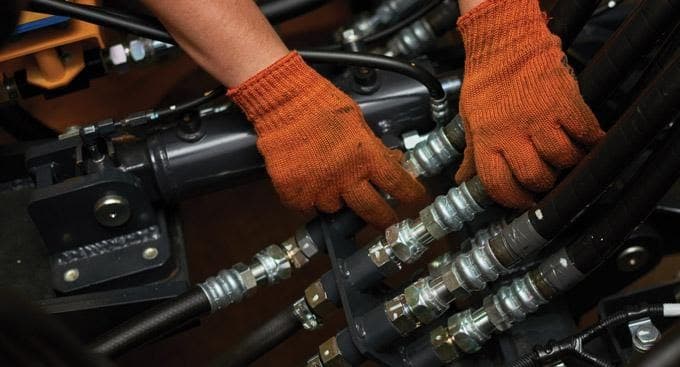Importance of Using the Right Crimp Spec for Hose End Fittings

Image Description: An image of different hydraulic hose assembly ends
Hydraulic hose end fittings come in various shapes and sizes. Some fittings are permanent; that is to say, they require a crimping machine that deforms their ferrule or sleeve to a particular crimp spec so that the hose and fitting form a permanent bond. The assembly can then be used for all sorts of hydrostatic systems.
Having your own hydraulic crimping machine has its advantages. You can customize hose assemblies to your specifications, and you don’t have to outsource them from other service providers, thereby saving you time and money. However, equally important is paying attention to crimping specifications when forming hose assembly. It determines the quality of the bond between the hose and the hose end fitting.
Prevents Leaks
Hose manufacturers provide crimp charts that indicate crimping specifications for each of their hoses. The chart mentions various pieces of information about the hose, which lets you select a suitable fitting. Say you didn’t consult this chart and chose a fitting that does not correspond to the internal diameter of the hose, leaks may occur. This is because the stem that fits inside the hose becomes too loose, allowing for fluid to leak out.
Additionally, the chart indicates which die set is required and the associated spacer is required for crimping. It could be a D100, D165, D200, or other types depending on the crimping machine you use and the hose and fitting you intend to assemble. If the correct die set is not chosen, based on the crimp spec, then gaps may appear between the hose and fitting – again, leading to leaks.
Hose May Pop Off
Some hoses require skiving to be done on their ends before a hose-end fitting can be inserted on it. Skiving is the process by which some of the outer cover is shaved off the hose. This is done to ensure that the skive hose end fitting used has enough depth to penetrate the outer cover and grip the internal mesh or spiral of the reinforcement layer. If skiving is not done when using skive hose end fitting, the heat of the hydraulic fluid may cause the rubber of the outer cover to become more pliable, loosen, and pop off. A similar case can be observed when insertion depth isn’t accounted for when consulting crimping specifications. If the hose isn’t properly inserted into the hose end fitting, it may come loose and pop off.
System Inefficiencies
If the right crimp spec isn’t followed during hose assembly, hoses may become more constricted than they have to be. Hence, hydraulic fluid cannot flow as easily to the different hydrostatic components of your system, leading to inefficiencies.
Safety Hazards
The ultimate result of neglecting to account for the right crimp spec is safety issues. Hydraulic fluid runs at high pressure throughout a hydraulic system. If an operator or maintenance worker is at the wrong place and the wrong time, hose failure may lead to serious injuries or even death. This means that your organization may have to face serious penalties and litigation.
Important Considerations before Crimping Hydraulic Hoses
Safety:
Before you embark on crimping your hydraulic hoses, safety should be your utmost priority. Crimping machines are dangerous instruments and can injure and permanently disable you if you do not take the proper safety precautions. Make sure that you wear protective goggles to protect your eyes in case parts of the fitting break and fly off. Additionally, having strong, cut-proof gloves is important as well. The crimping process may require you to prepare a hose before a fitting is put onto it. Metal parts of the hose become exposed and may result in lacerations if not handled properly. Your crimping machine should also be equipped with an emergency stop button in case anything goes wrong during the process.Inspection:
Inspecting materials before you assemble them is essential if you’re looking to ensure that you get the correct crimp specifications for your hose assembly. The final product will exhibit quality and prevent failure. Make sure you visually inspect all fittings and hoses for major imperfections. Cracks along the hoses, broken or loose fittings and other manufacturing defects are just some of the things to look out for. Additionally, inspection helps you make sure that you’re using the correct part for the assembly as many fittings conform to different standards. Once the assembly is fabricated as per crimp specifications, its components cannot be removed without damaging them.Calibration:
All your measurement and crimping instruments must be calibrated before you start crimping. Crimping machines use a set of dyes that compress the fitting onto the hose for a tight fit. If your tools aren’t calibrated, you may end up over crimping, under crimping, measuring the wrong insertion depth, or measuring the incorrect outer diameter. This may result in the final assembly not even making it past the testing phase, and you’ll end up losing a viable part all because of an oversight.